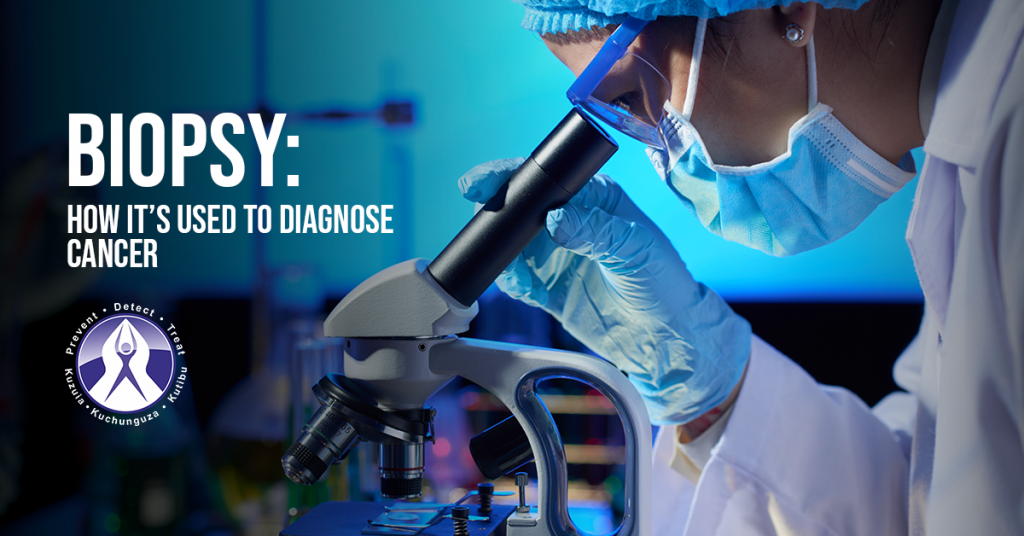Understanding Biopsy: A Guide to Techniques for Cancer Diagnosis
Share IT

Launch Your Dream Website with Us!
Click Here to Get in touch with Us.
Categories
Biopsy for Cancer Diagnosis
Revealing the Reality: Biopsy Methods for Macroscopic Cancer Identification
The confirmation of cancer’s presence is essential for starting the right therapy, and receiving a diagnosis can change someone’s life. A little tissue sample is removed for a pathologist’s microscopic examination during a biopsy, the gold standard for diagnosing malignancy. Several biopsy methods for cancer diagnosis are examined in this blog.
Thank you for reading this post, don't forget to subscribe!Table of Contents

Why Do Biopsies Matter?
Biopsy for Cancer Diagnosis
When diagnosing cancer, biopsies are essential because
- Verification of cancer cell presence: A biopsy enables a pathologist to analyse the tissue under a microscope and spot aberrant cells, providing conclusive proof of malignancy.
- Determining the type of cancer: A microscopic inspection can be used to determine the kind of cancer because different tumours have different characteristics. The most effective treatment strategy must be chosen after determining the type of cancer.
- Categorising cancer: Based on how the cancer cells behave and look, biopsies can be used to determine how aggressive the disease is.
Biopsy for Cancer Diagnosis
There is no “one-size-fits-all” method for biopsy. Numerous considerations determine the best approach, such as:
- Location of the suspected cancer: The technique used varies according on whether the suspected cancerous spot is deep within the body or easily accessible.
- The anomaly’s dimensions and kind: Which biopsy procedure is used depends on the size and location of the abnormality.
- General health status of the patient: Patients with certain medical issues may not be candidates for certain operations.
The following summarises a few typical biopsy methods:
Biopsy for Cancer Diagnosis
- Fine-Needle Aspiration (FNA): Method: A little sample of cells is taken for microscopic analysis by inserting a thin, hollow needle under the guidance of ultrasonography or X-ray technology into the questionable area.
Benefits: Perfect for easily accessible regions like lymph nodes or breast tumours, minimally invasive, frequently done under local anaesthesia.
Cons: May not be appropriate for deep-seated tumours or all cancer types; frequently, insufficient tissue may be available for a conclusive diagnosis.
- Methodology for Core Needle Biopsy: A bigger, frequently cutting-tipped needle is used to gather a core of tissue. This usually involves local anaesthesia.
Benefits: Greater tissue sample size than FNA makes it possible to conduct a more thorough study.
Cons: Surgeons may need to sew the puncture site shut; more intrusive than FNA. - Surgical Biopsy: Methodology: A larger section of tissue is removed by an incisional incision made by the surgeon. Depending on where and how big a tissue sample is needed, either local or general anaesthesia can be used to accomplish this.
Benefits include the ability to remove a worrisome lesion for additional investigation and the provision of the greatest tissue sample for a conclusive diagnosis.
Cons: Longer recovery period required for the most invasive biopsy procedure. - Endoscopic Biopsy: The procedure for an endoscopic biopsy is as follows: a thin, flexible tube called an endoscope, which has a camera, is introduced into a body passageway or cavity (e.g., colonoscopy for the colon or bronchoscopy for the lungs). By passing equipment through the endoscope, a little tissue sample can be collected.
Benefits include the ability to visualise the region of concern and little invasiveness when compared to surgical biopsy.
Limitation in tissue sample when compared to surgical biopsy; may not be appropriate in many situations. - Aspiration and biopsy of the bone marrow:
The method used is: Leukaemia and lymphoma are two types of cancer that can be detected by taking a small sample of fluid and bone marrow tissue from the hipbone using a specialised needle.
Benefits: Assists in the diagnosis of bone marrow-related disorders and blood malignancies.
Cons: There is a chance of bleeding or infection, and it may cause the patient discomfort.
Observation is crucial:
Biopsy for Cancer Diagnosis
Doctors having specialised expertise in the particular technique typically conduct biopsy operations.
Consult your physician prior to a biopsy to go over the procedure’s advantages, disadvantages, and recuperation time.
There may be some pain or discomfort, depending on the biopsy site and method. Local anaesthetic and sedation are common methods for managing pain.
Results of Biopsies: More Than Just a Diagnosis
Biopsy for Cancer Diagnosis
According to the intricacy of the study, the findings of a biopsy could come back in a few days or weeks. Your physician will review the results with you after they’ve been received, covering:
- The presence of cancerous cells
- If cancer is detected, the particular kind of cancer
- If relevant, the cancer grade
- Your treatment plan’s subsequent steps
Biopsy for Cancer Diagnosis
You can take an active role in conversations regarding your treatment options if you are aware of the biopsy results.
Recap: A Vital Stage in the Battle Against Cancer: The Biopsy
Biopsy for Cancer Diagnosis
The use of biopsies in cancer diagnosis and therapy planning is crucial. With greater confidence, you may tackle this important phase if you comprehend the various strategies and their ramifications. Keep in mind that effective cancer therapy depends on early detection and diagnosis.

Launch Your Dream Website with Us!
Click Here to Get in touch with Us.





























































Recent Comments